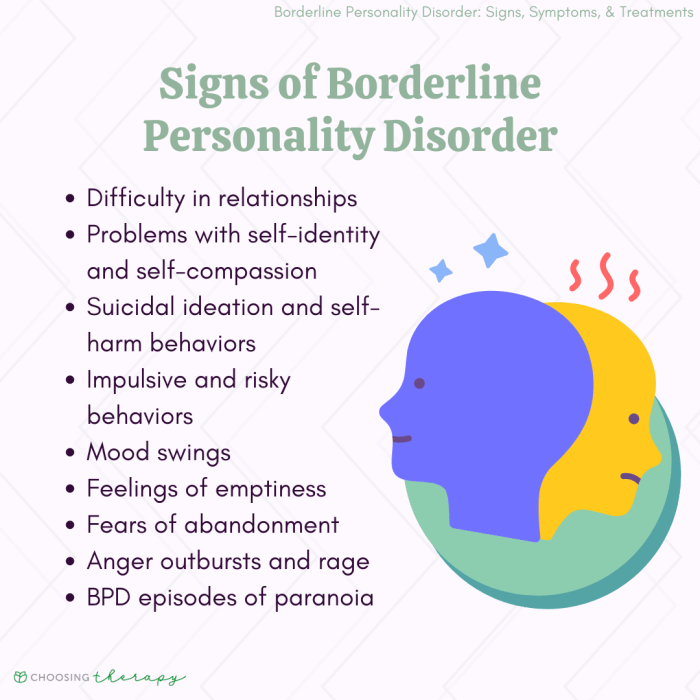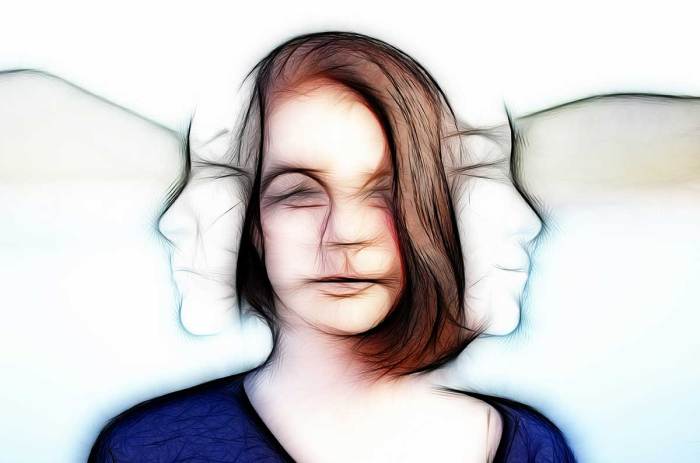Borderline personality disorder and hugging is a complex and multifaceted topic that has garnered significant attention in the field of mental health. This article delves into the intricate relationship between BPD and physical touch, exploring the potential benefits and challenges associated with hugging individuals with BPD.
Individuals with BPD often experience intense emotions and difficulty regulating their behavior. Physical contact, such as hugging, can provide a sense of comfort and safety, helping to soothe emotional distress and reduce feelings of isolation. However, it is crucial to approach physical contact with caution, as it can also trigger negative reactions or misinterpretations.
Definition and Characteristics of Borderline Personality Disorder (BPD): Borderline Personality Disorder And Hugging

Borderline Personality Disorder (BPD) is a mental health condition characterized by a pattern of unstable relationships, intense emotions, and impulsive behaviors. Individuals with BPD often experience difficulty regulating their emotions, which can lead to self-harm, substance abuse, and other risky behaviors.
The diagnostic criteria for BPD include a pervasive pattern of:
- Frantic efforts to avoid real or imagined abandonment
- A pattern of unstable and intense interpersonal relationships characterized by alternating between idealization and devaluation
- Identity disturbance: markedly and persistently unstable self-image or sense of self
- Impulsivity in at least two areas that are potentially self-damaging (e.g., spending, sex, substance abuse, reckless driving, binge eating)
- Recurrent suicidal behavior, gestures, or threats, or self-mutilating behavior
- Affective instability due to a marked reactivity of mood (e.g., intense episodic dysphoria, irritability, or anxiety usually lasting a few hours and only rarely more than a few days)
- Chronic feelings of emptiness
- Inappropriate, intense anger or difficulty controlling anger (e.g., frequent displays of temper, constant anger, recurrent physical fights)
- Transient, stress-related paranoid ideation or severe dissociative symptoms
BPD is a relatively common mental health disorder, affecting approximately 1.6% of the general population. It is more prevalent in women than in men.
Physical and Emotional Manifestations of BPD

Individuals with BPD often experience a range of physical and emotional symptoms. Physical symptoms may include:
- Self-harm, such as cutting or burning
- Somatic complaints, such as headaches, stomach aches, or fatigue
- Sleep disturbances
- Eating disorders
- Substance abuse
Emotional symptoms may include:
- Emotional dysregulation, characterized by intense and rapidly shifting emotions
- Mood swings
- Impulsivity
- Difficulty controlling anger
- Suicidal thoughts or behaviors
These symptoms can be extremely distressing and can significantly interfere with an individual’s ability to function in everyday life.
Impact of BPD on Interpersonal Relationships
BPD can have a significant impact on an individual’s ability to form and maintain stable relationships. Individuals with BPD often experience:
- Difficulty trusting others
- Fear of abandonment
- Intense need for attention and approval
- Idealization and devaluation of others
- Impulsive and self-destructive behaviors
These difficulties can make it challenging for individuals with BPD to build and maintain healthy relationships. They may find themselves repeatedly engaging in unhealthy patterns, such as clinging to relationships that are not good for them or pushing away those who care about them.
Treatment Options for BPD

There are a number of different therapeutic approaches that can be used to treat BPD. Two of the most common are dialectical behavior therapy (DBT) and cognitive behavioral therapy (CBT).
DBT is a type of therapy that focuses on teaching individuals with BPD how to regulate their emotions, tolerate distress, and improve their interpersonal skills. CBT is a type of therapy that focuses on changing negative thought patterns and behaviors.
In addition to therapy, medication may also be used to treat BPD symptoms. Medications that are commonly used for BPD include antidepressants, antipsychotics, and mood stabilizers.
Popular Questions
Can hugging help individuals with BPD?
Yes, hugging can provide comfort and safety, reducing emotional distress and feelings of isolation.
Are there any risks associated with hugging individuals with BPD?
Yes, physical contact can trigger negative reactions or misinterpretations, so it is important to proceed with caution.
What ethical considerations should be taken into account when providing touch and hugs?
Therapists and caregivers must obtain informed consent, respect boundaries, and ensure that physical contact is provided in a safe and supportive manner.